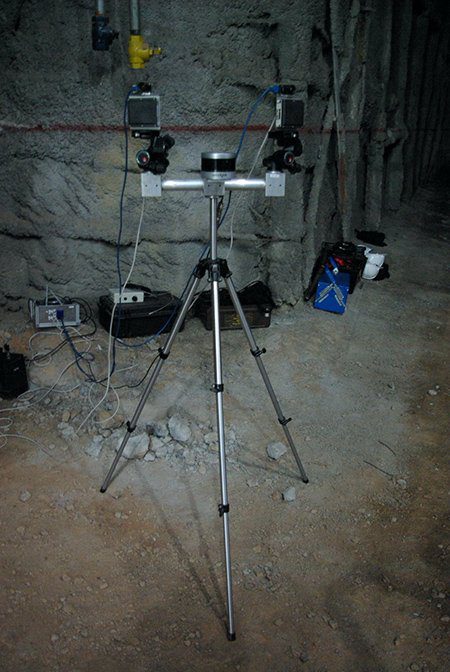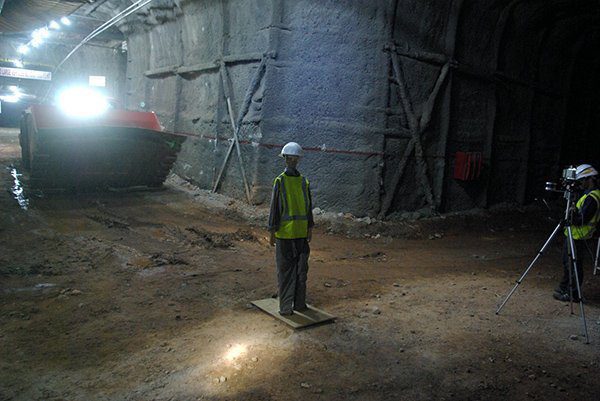An engineering team at the University of Pretoria (UP) has pioneered an underground procedure which tests the performance of collision-avoidance systems (CAS) in an effort to improve the safety of workers on mines by reducing unwanted interaction between vehicles and pedestrians. The Vehicle Dynamics Group (VDG) is a research unit at the University’s Department of Mechanical and Aeronautical Engineering that is actively involved in the South African and international mining industry. It saw a need to develop such a system based on the continued number of fatalities that have occurred as a result of interaction with mining machines and to be in step with subsequent changes (yet to be promulgated) in Chapter 8 of the Mine Health and Safety Act (1996) that require trackless mobile machines to warn the operator if a significant risk of collision exists. If the operator fails to heed the warning, the machine must automatically slow down and stop safely.
Improving mine development through engineering research
Monitoring light vehicle fleets for improved efficiencies

“Mining machines are becoming smarter by the day, with smart, connected vehicles promising to be the mining method of the future,” says VDG researcher Professor Schalk Els. “Smart mining machines are now utilising technology such as high-precision GPS and automotive radars to prevent unwanted interaction with other machines, pedestrians and infrastructure.”
“This development is a stepping stone to full autonomy – not only on mines but in urban and highway environments too,” adds Dr Herman Hamersma, also a VDG researcher. “Mining machines typically perform repetitive tasks with well-defined mission profiles, which allows for the automation of many of their operations.”
The VDG has aided in the formulation of industry guidelines to analyse and improve the readiness level of collisionavoidance offerings on the market, and has developed a standard testing procedure to evaluate both surface and underground collision-management systems based on guidelines set out by the Minerals Council South Africa.
CAS assessments were previously limited to above-ground testing, and UP’s involvement in this has been a gamechanger in the CAS space, having contributed significantly to the increasing maturity of commercial offerings. With the VDG’s recent development of an underground testing system, it is anticipated that the technology readiness of current underground CAS offerings will be even more improved.
The performance of CAS is tested by way of a stage-gate approach. The first stage gate is a lab-scale test, which is conducted on light vehicles in a controlled environment. The CAS is installed on the light vehicles exactly as would be done in a mining environment.
“These vehicles are equipped with brake robots that control the stopping distance and can be controlled to represent minimum brake specifications, while high-precision GPS accurately measures the speeds and positions of the vehicles,” explains Dr Hamersma. “An advanced data capturing and control system is used to control the brake robot, and to record the GPS data and the decisions communicated to the test vehicle by the CAS.”
If the CAS passes the lab-scale test, it can proceed to the next stage-gate, where the system is subjected to a single interaction test, which is conducted in an environment that is more representative of a mine.
To date, testing has been limited to surface tests due to the reliance on high-precision GPS as the ground truth measurement. However, the VDG team’s recent development of an underground system makes use of lidar (which uses laser light to calculate distances), cameras and automotive radar to measure the distance between objects and their speeds. The system has been tested at a training facility at one of South Africa’s underground mines, and the first live underground single interaction test is in the pipeline. The system will be used to validate the lab-scale results of underground CAS solutions in their intended underground environment where line of sight, dust and uneven, slippery road surfaces are serious concerns.
The international community has noticed the activity in this space in South Africa, and this has led to collaborations with international CAS vendors and industry bodies such as the International Council on Mining & Metals (ICMM), the ISO working group leading the development of the collision avoidance standard and a project in collaboration with Mining3, a research institute based in Australia that was funded by the Australian Coal Association Research Programme (ACARP).
Read more Mining Safety News














Add Comment